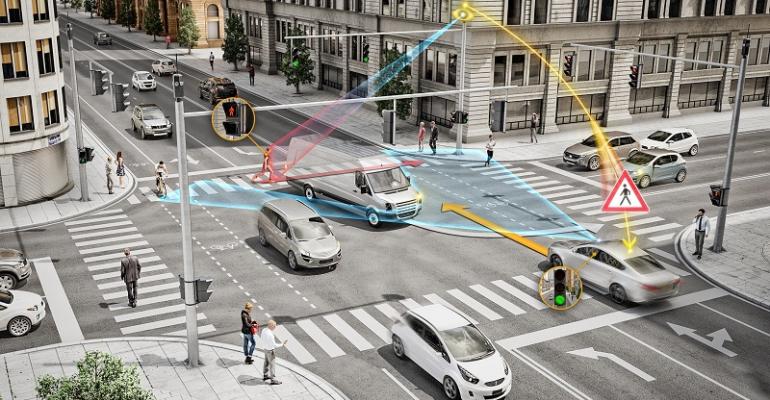Automakers must apply an integrated approach to connectivity if fully autonomous cars are to become a reality, a leading industry consultant says.
Manuela Papadopol, co-founder and managing partner at Sansea Consulting, a boutique consultancy with offices in San Diego and Seattle, says automakers and suppliers should ditch a silo mentality around the deployment of networks such as dedicated short-range communication and Wi-Fi hotspots.
“There is a fundamental flaw with that,” says Papadopol, a former Microsoft executive who serves on the advisory board of AutoMobility LA. “We need to make the most of every interface within the vehicle in order to have a seamless and safe experience as we move to automated driving.”
Papadopol suggests the industry gain a keener understanding of mesh networks, where nodes along a wireless network, such as cars and infrastructure and devices, connect directly, dynamically and without hierarchy to exchange data.
Imagine, as automaker Daimler suggests, a pulsing web of energy and intelligence. A driver could benefit from a mesh network if the airbag activates, because emergency services could be notified immediately.
Papadopol points to the Portuguese startup Veniam, which in conjunction with the city of Porto operates the largest mesh network of connected vehicles in the world. Veniam technology turns the city’s municipal fleet – buses, garbage trucks and street cleaners – into Wi-Fi hotspots to deliver constant Internet connectivity to passengers and mobile workers.
As the vehicles navigate the city, they establish wireless connections with one another to create a mesh network and extend the connectivity of a single vehicle. Handoffs between hotspots are stable. The program reduces cellular network traffic in Porto up to 70%, which leads to cost reductions for operators. The vehicles also collect data to fuel Porto’s smart-city applications, which, for example, helps motorists avoid congested areas.
“I’ve been quite impressed with their technology,” Papadopol (pictured below, left) says of Veniam, which also has offices in Mountain View, CA, and New York.
Veniam’s technology arguably is one approach to applying the vehicle-to-vehicle and vehicle-to-infrastructure communication automakers have been pursuing for some years, although the rollout has been slowed by regulatory debates over dedicated broadcast frequencies and the exact consumer benefits it may offer for the investment.
 More recently, advances in cellular technology, including a rollout in a few years of the 5G cellular network, have some automakers contemplating changing gears away from DSRC.
More recently, advances in cellular technology, including a rollout in a few years of the 5G cellular network, have some automakers contemplating changing gears away from DSRC.
However, work continues as automakers pursue over-the-air update capability to keep the content of their cars fresh to improve safety, heighten the user experience and someday soon perhaps perform remote maintenance.
And, of course, V2V communication will be necessary for Level 4 and Level 5 autonomous vehicles.
“Car makers do have this technology in their cars, but I do not think they make the most out of it today,” Papadopol says. “There’s an opportunity to do that in the future.”
Daimler and General Motors have led the deployment of V2V, while Toyota plans to bring V2V-equipped cars to its namesake and Lexus brands in 2021. Suppliers such as Germany’s Continental and Bosch continue to push development of V2V, as well.
The work is generating reams of valuable data automakers likely will apply to AVs and within their mobility services units, which will push leaders in the space further to becoming technology companies rather than merely makers of cars and trucks, Papadopol says.
Daimler, for example, has made becoming a data-driven company part of its mission statement. The new A-Class serves as the head of the spear with advanced technologies such as artificial intelligence for natural-language recognition within its Mercedes-Benz User Experience (MBUX) system. The A-Class, launched July 24 in New York City, also receives over-the-air updates.
“And we are talking about a car maker that is putting this technology in an entry-level car. This is not the S-Class,” Papadopol says. “Making it affordable, mostly for the new generation of tech savvy buyers, that is incredible.”





